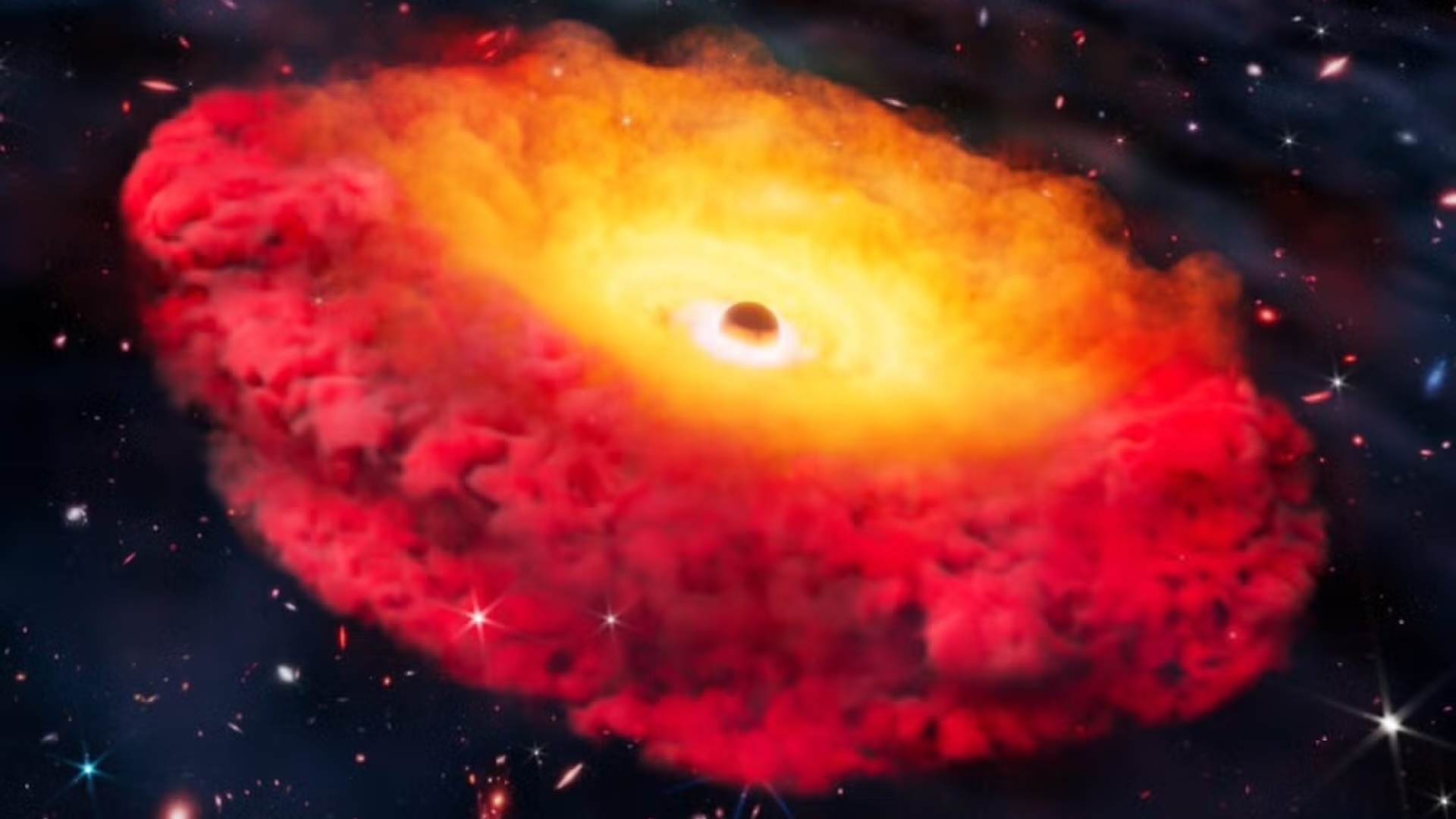James Webb telescope spots earliest black hole in the known universe, looking 'as far back as you can practically go'
Astronomers using the James Webb telescope have zoomed in on a 'Little Red Dot' that existed just 500 million years after the Big Bang, and found that it may contain the earliest known black hole in the universe.

Scientists using the James Webb Space Telescope (JWST) have identified the earliest black hole found thus far, dating back to more than 13 billion years ago.
The black hole and its home galaxy, together dubbed CAPERS-LRD-z9, existed just 500 million years after the Big Bang. Its properties could help researchers understand what the universe was like in that elusive early era, according to a study published August 6 in the Astrophysical Journal Letters.
"When looking for black holes, this is about as far back as you can practically go," study coauthor Anthony Taylor, an astronomer at the University of Texas, Austin, said in a statement. "We're really pushing the boundaries of what current technology can detect."
CAPERS-LRD-z9 is a type of galaxy called a "Little Red Dot," so named because they're small (as galaxies go) and appear to emit red light when observed with JWST's powerful infrared sensors. Little Red Dots shine brightly, which might suggest they contain a lot of stars — except they formed in the early universe, when an abundance of stars was unlikely, according to current leading theories of cosmology.
"The discovery of Little Red Dots was a major surprise from early JWST data, as they looked nothing like galaxies seen with the Hubble Space Telescope," study coauthor Steven Finkelstein, an astronomer at UT Austin, said in the statement. "Now, we're in the process of figuring out what they're like and how they came to be."
To better understand the nature of CAPERS-LRD-z9 and Little Red Dots like it, researchers investigated the galaxy with the JWST. The team found a distinct pattern of wavelengths of light created when fast-moving gas falls into a black hole. Though astronomers have found a few objects farther away than CAPERS-LRD-z9 that might be black holes, this pattern makes CAPERS-LRD-z9 the earliest confirmed black hole to date and suggests that black holes might lie at the center of other Little Red Dots.
Get the world’s most fascinating discoveries delivered straight to your inbox.
The black hole at the center of CAPERS-LRD-z9 is pretty hefty. It's some 38 million times more massive than the sun or about 10 times more massive than Sagittarius A*, the supermassive black hole at the center of the Milky Way — though there's considerable wiggle room in that estimate. The scientists also think that the black hole has as much mass as about 5% of all the stars in its galaxy put together, a ratio far exceeding that of modern galaxies.
"This adds to growing evidence that early black holes grew much faster than we thought possible," Finkelstein said. "Or they started out far more massive than our models predict."
CAPERS-LRD-z9 could also help explain why Little Red Dots are red. A dense cloud of gas surrounding the black hole could shift any emitted light into longer, redder wavelengths, the researchers predicted.
Further studies of CAPERS-LRD-z9 could offer even more information about black holes and galaxies in the early universe, the scientists wrote in the study.
"This is a good test object for us," Taylor said in the statement. "We haven't been able to study early black hole evolution until recently, and we are excited to see what we can learn from this unique object."

Skyler Ware is a freelance science journalist covering chemistry, biology, paleontology and Earth science. She was a 2023 AAAS Mass Media Science and Engineering Fellow at Science News. Her work has also appeared in Science News Explores, ZME Science and Chembites, among others. Skyler has a Ph.D. in chemistry from Caltech.
You must confirm your public display name before commenting
Please logout and then login again, you will then be prompted to enter your display name.


